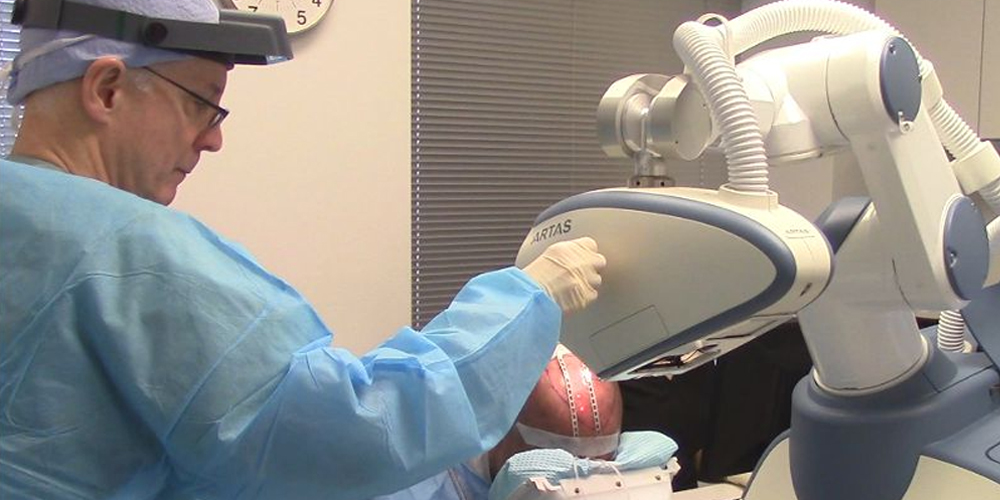Robotic Hair Transplant: Are They the Future?
In recent years, the field of hair restoration has experienced revolutionary advancements, one of which is the emergence of Robotic Hair Transplant systems. These cutting-edge technologies promise greater precision, efficiency, and a more streamlined process for both patients and practitioners. As the quest for luxurious locks continues to drive innovation, the question arises: are robotic hair transplants truly the future of hair restoration? This article will explore various aspects of robotic hair transplant technology, its benefits and limitations, patient experiences, and the implications for the future of hair restoration.
1. Understanding Robotic Hair Transplant Technology
The concept behind robotic hair transplantation may seem daunting, yet it represents a fascinating blend of art, science, and cutting-edge technology.
1.1. The Mechanism of Robotic Systems
Robotic hair transplant systems utilize advanced algorithms and imaging techniques to harvest hair follicles with exceptional accuracy.
This involves the use of specialized robotic arms that are equipped with instruments capable of extracting follicular units from the donor area of a patient's scalp. The robot scans the scalp to assess the density and health of the hair follicles before making precise incisions. By automating this part of the procedure, the system significantly minimizes human error, yielding higher-quality grafts.
One of the significant advantages of using robotics in hair transplantation is the ability to perform minimally invasive procedures. Traditional methods often involve larger incisions and a longer recovery time, while robotic systems can achieve results with smaller, less traumatic surgical sites. This means that patients can experience reduced scarring and quicker healing times.
1.2. Comparing Robotic and Manual Techniques
When discussing hair transplant techniques, it's essential to understand how robotic systems compare to manual approaches like Follicular Unit Extraction (FUE).
In traditional FUE, surgeons manually extract individual hair follicles, which requires extensive skill and experience. While many surgeons excel at this technique, there is an inherent variability based on the surgeon's expertise, fatigue levels, and even slight tremors in their hands. In contrast, robotic systems maintain consistent performance throughout the procedure.
However, it's important to note that despite the enhanced precision of robotic systems, the role of the skilled surgeon remains crucial. A surgeon must oversee the entire process, including selecting the best hair follicles for extraction and placing them strategically in the recipient area. Thus, rather than replacing the need for experienced professionals, robotic technology complements their skills, allowing them to focus on the artistic elements of hair restoration.
1.3. The Role of Artificial Intelligence in Hair Restoration
Artificial intelligence (AI) plays a pivotal role in advancing robotic hair transplant technology.
By analyzing vast amounts of data about hair growth patterns, scalp conditions, and patient demographics, AI can assist in predicting outcomes and tailoring treatment plans for individual patients. This level of personalization is unprecedented in the hair restoration industry, allowing for improved success rates and satisfaction among patients.
Moreover, AI can provide real-time feedback during the transplant procedure, enabling surgeons to adjust their approaches as necessary. This adaptability ensures that each hair transplant session is optimized for the specific needs of the patient, leading to better overall results. In essence, AI serves as a powerful ally for both surgeons and patients, making the robotic hair transplant experience more efficient and effective.

2. Advantages of Robotic Hair Transplants
With the introduction of robotic systems into the hair restoration arena, patients can experience an array of benefits that set these procedures apart from traditional techniques.
2.1. Enhanced Precision and Accuracy
One of the most significant advantages of robotic hair transplants is the precision they offer.
The robotic systems' advanced imaging capabilities allow for detailed mapping of the scalp, ensuring that the extraction and implantation of hair follicles occur with remarkable accuracy. Each follicle is harvested at the optimal angle and depth, mimicking natural hair growth patterns. This attention to detail leads to more aesthetically pleasing results, helping patients achieve fuller, natural-looking hairlines.
Furthermore, the consistency provided by robotic systems minimizes damage to surrounding follicles. This precision not only improves the quality of the extracted grafts but also maximizes the survival rate of the transplanted hair, reducing the chances of shock loss—a common concern in traditional transplant procedures.
2.2. Quicker Recovery Times
Patients often express concerns about the downtime associated with hair transplant surgeries.
Robotic hair transplants mitigate this issue by employing minimally invasive techniques. Since the robot uses smaller incisions and extracts hair follicles without extensive trauma to the scalp, patients can expect shorter recovery periods. Many individuals return to their daily routines within just a few days after the procedure.
Additionally, the reduction in scarring associated with robotic systems adds to the appeal for those apprehensive about visible marks on the scalp. For individuals looking to keep their hair restoration journey discreet, the minimal invasiveness of robotic hair transplants is a significant advantage.
2.3. Reduced Human Error
Despite the expertise of seasoned surgeons, mistakes can occur during manual hair transplant procedures.
Robotic systems aim to alleviate this concern by removing much of the variability linked to human performance. With consistent mechanical precision, robotic devices can execute tasks repetitively and accurately, reducing the likelihood of errors that could negatively impact patient outcomes.
While any surgical procedure carries inherent risks, the automation of certain steps can lead to a smoother experience for patients. Ultimately, fewer complications mean increased confidence in the procedure itself, encouraging more individuals to seek hair restoration solutions.

3. Patient Experiences and Satisfaction
Understanding patient experiences with robotic hair transplants can shed light on the effectiveness and acceptance of this technology within the broader context of hair restoration.
3.1. Testimonials and Success Stories
Many patients who undergo robotic hair transplants report highly positive experiences.
A recurring theme in testimonials is the reduced discomfort typically associated with traditional methods. Patients have noted that the minimally invasive nature of robotic procedures allows them to cope with the surgery more comfortably, leading to heightened satisfaction levels.
Furthermore, individuals frequently mention the aesthetic results achieved through robotic systems. The meticulousness of the extraction and implantation processes often yields striking transformations, prompting many patients to share their stories of renewed confidence and self-esteem. Positive before-and-after comparisons reinforce the notion that robotic hair transplant technology can lead to outstanding results, fostering a growing community of satisfied clients.
3.2. Addressing Concerns and Misconceptions
While many patients embrace robotic hair transplants, some still harbor reservations about the technology’s reliability and effectiveness.
Concerns often stem from a lack of understanding about how robotic systems work, along with the fear of over-reliance on machines in a medical context. Addressing these misconceptions requires transparent communication from practitioners. Surgeons should emphasize that robotic systems are tools, enhancing their capabilities rather than replacing their judgment and expertise.
Additionally, educating potential patients about the rigorous training required to operate robotic systems is vital. Surgeons utilizing these technologies must possess a comprehensive understanding of hair restoration principles and be well-versed in managing the equipment. By demystifying the technology and highlighting the practitioner's role in the process, patients can make informed decisions about their hair restoration options.
3.3. The Importance of Realistic Expectations
As with any medical procedure, setting realistic expectations is crucial for achieving patient satisfaction.
While robotic hair transplants yield impressive results, they are not a magical solution for everyone facing hair loss. Patients should engage in thorough consultations with their surgeons to discuss individual goals, hair characteristics, and potential outcomes. This open dialogue fosters a stronger patient-surgeon relationship and enhances the likelihood of satisfactory results.
Surgeons must transparently communicate the limitations of the procedure, such as the number of grafts that can realistically be harvested in a single session and the time required for hair regrowth post-transplant. By establishing clear expectations, patients can approach their hair restoration journeys with a sense of optimism grounded in reality.
4. Challenges Facing Robotic Hair Transplantation
Despite its numerous advantages, robotic hair transplantation is not without its challenges.
4.1. Cost Considerations
One of the most significant barriers to widespread adoption of robotic hair transplant technology is the cost associated with the procedure.
Robotic systems require substantial investments in advanced equipment and technology, which can translate to higher fees for patients seeking hair restoration services. Many individuals may find themselves deterred by the price tag, particularly if they have limited financial resources for cosmetic procedures.
To address this issue, clinics offering robotic hair transplants may explore flexible financing options or payment plans to make the service more accessible. Additionally, educating patients about the long-term benefits of investing in high-quality hair restoration may help justify the costs associated with robotic systems.
4.2. Limited Availability
As robotic hair transplant technology is relatively new, its availability is often limited to select clinics and geographic areas.
Patients residing in regions lacking access to advanced hair restoration facilities may feel discouraged, prompting them to consider alternative methods-potentially sacrificing the benefits offered by robotic systems. Addressing this challenge will require ongoing efforts to expand awareness of robotic hair transplantation and encourage more clinics to adopt the technology.
Promoting education and training for medical professionals will also play a crucial role in increasing the availability of robotic hair transplants. As more surgeons become adept at utilizing these systems, patients will benefit from a wider array of options when it comes to their hair restoration journeys.
4.3. Potential Technical Limitations
While robotic systems boast high levels of precision, they are not immune to technical limitations.
Equipment malfunctions, software glitches, or issues related to the mechanical components can arise, potentially affecting the quality of the transplant. It is crucial for clinics to invest in regular maintenance and upgrades to ensure that their robotic systems operate seamlessly.
Furthermore, as with any surgery, there are inherent risks involved. Although robotic systems reduce human error, they cannot entirely eliminate complications related to the healing process, such as infections or graft rejection. Open communication between patients and their surgeons about these potential risks is essential to cultivate trust and manage expectations.
Conclusion
In summary, Robotic Hair Transplant technology represents an exciting frontier in the world of hair restoration. The advantages of enhanced precision, quicker recovery times, and improved patient satisfaction underscore its potential to revolutionize the industry. While challenges such as costs, accessibility, and technical limitations remain, the continued evolution of this technology holds great promise for the future of hair transplantation.
As patients increasingly seek out innovative and effective solutions to combat hair loss, robotic systems are likely to play an integral role in shaping the landscape of hair restoration. By combining the artistry of skilled surgeons with the accuracy of robotic technology, we can look forward to a future where every individual struggling with hair loss has access to effective and personalized solutions tailored to their unique needs.
LATEST POSTS








